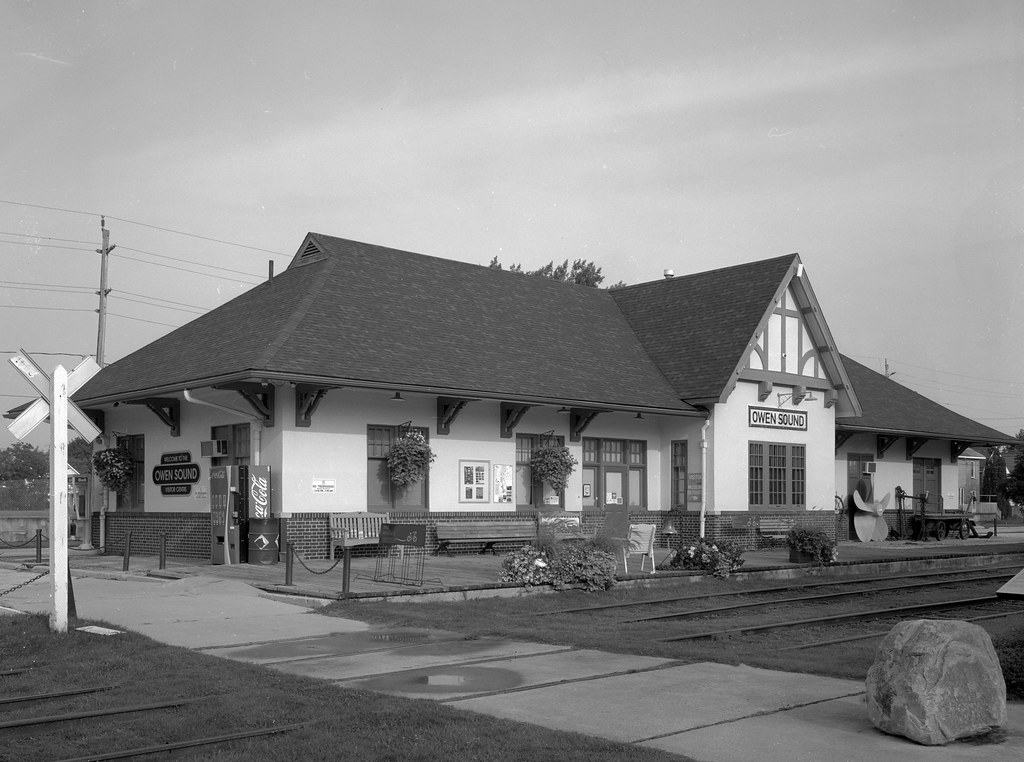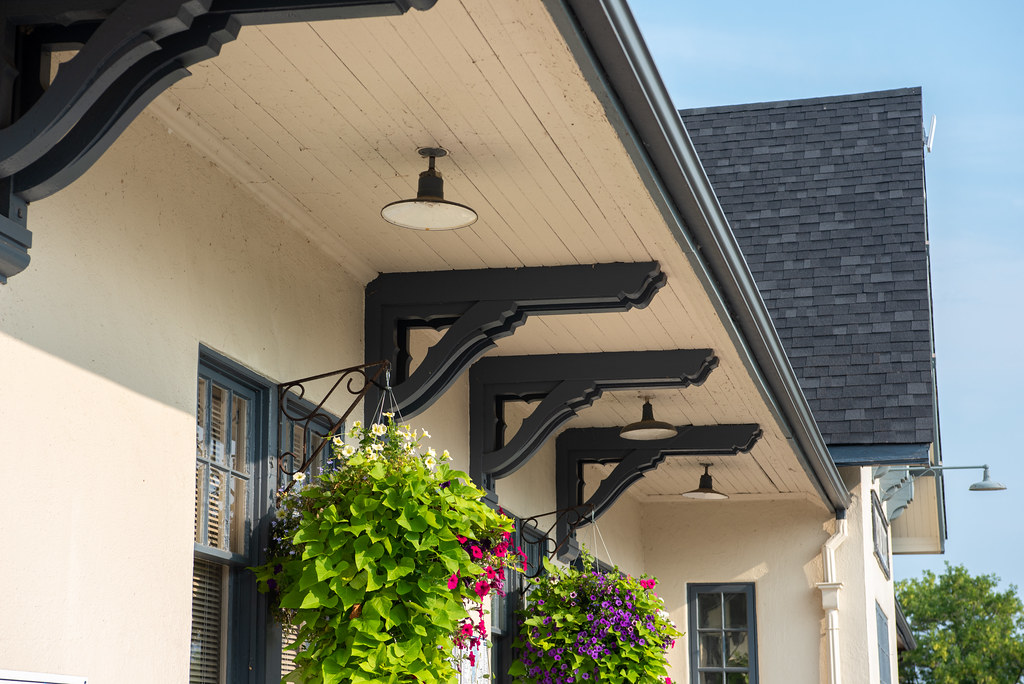At a glance, it might be hard to believe that the old Canadian National Station in Owen Sound looks like Grand Trunk had built in the early 20th Century, but this station is the second one built in 1931. It is also one of the most complex stations to find accurate detail online.

Graflex Crown Graphic – Fuji Fujinon-W 1:5.6/125 – Ilford HP5+ @ ASA-200 – Pyrocat-HD (1+1+100) 9:00 @ 20C
The first successful railway line to arrive in Owen Sound was the Toronto, Grey & Bruce line from Fraxa Junction in 1873, north of the town core and on the eastern side of the harbour. After the takeover by Canadian Pacific in 1884, after Grand Trunk dismissed their chance to take over Toronto, Grey & Bruce began planning their branch line from Palmerston. Construction of the line started in 1891, with the first train running on the new line in 1894. At Owen Sound, Grand Trunk constructed a similar but smaller yard on the western side of the harbour. Here a simple single-storey station saw construction. The low building harkened to the Italianate stations completed during the 1850s along the original trunk line from Toronto to Montreal. The low peaked roof with wide overhang on the eves. A two-storey agent house was completed next to the station, along with a series of auxiliary buildings—an engine house, freight sheds, and coal and water towers. There are only a handful of surviving station photographs, but there’s a good chance the station featured two waiting rooms based on the size, a general and a men’s smoking room. An agent office, yard office, telegraph bay and baggage room.

Nikon D750 – AF-S Nikkor 28-70mm 1:2.8D
Nikon D750 – AF-S Nikkor 28-70mm 1:2.8D
As part of their efforts to streamline their network, Canadian National opted to construct a far better station for Owen Sound in place of several different buildings. The new station was larger and took the place of separate freight sheds. It was constructed as part of a make-work program to help Canadians who lost their jobs during the great depression. While the popularity of Art Deco and Beaux-Arts styles rose, Canadian National slipped back to the earlier Queen Anne Revival style. The new station featured a long rectangular footprint with long north and south wings off the central section with a high peaked roof. The foundation of red brick rose to a stucco exterior with simple cornice details and a wide overhang on the eves. Inside, a single general waiting room occupied the southern section. The centre contained the telegraph bay and ticket window. The northern area held the agent’s office and freight room. The station never proved as popular as the Canadian Pacific line on the other side of the harbour, but both saw a sharp decline in the post-war years. Passenger service ceased from the station in 1970, although rail traffic continued to run until 1987.

Nikon D750 – AF-S Nikkor 28-70mm 1:2.8D
Nikon D750 – AF-S Nikkor 28-70mm 1:2.8D
The station underwent serious renovation as a new tenant picked up the station, and the Owen Sound Transportation Company transformed it into their new headquarters. The company has been around since 1921 and operated a series of steamships on the upper Great Lakes, with their first ship, the SS Modjeska, being repaired and restored to service as the SS Manitoulin in 1927. The station’s location on the harbour with extant docks made it an ideal spot. Owen Sound Transportation would renovate the interior and convert the spaces into offices. By the time the company took up occupation of the station, they were best known for running the ferry service between Tobermory and Manitoulin Island with the SS Norisle and MS Norgoma. Operations out of the old station continued even after a takeover by the Provincial Government in 1974. Still, a decade later, new headquarters had been set up, and the company moved on. Owen Sound purchased the station in 1984 and transformed the old station into the Marine & Rail Museum. Today the museum provides a direct line to Owen Sound’s heritage on the upper Great Lakes and preserves a lot of memorabilia. Outside are a couple of surviving rolling stock, including a 1910 Grand Trunk Western boxcar that became a caboose in 1947. After retiring, it became a party room for the Owen Sound McDonalds in the 1990s until 2002, when it was gifted to the museum and restored to Canadian National colours. A 1954 Pullman passenger car served on Grand Trunk Western, Canadian National and VIA Rail until 1984 and then a tearoom until 2014 before arrival and restoration in 2015. In contrast, the station retains much of its external appearance. The interior is completely gutted and converted into a museum space. It is worth a visit if you want to explore the local history of Owen Sound’s marine, rail and industrial heritage.

Nikon D750 – AF-S Nikkor 28-70mm 1:2.8D